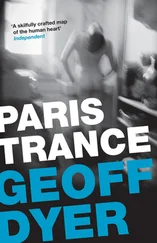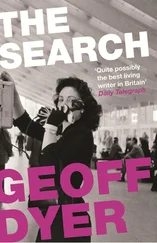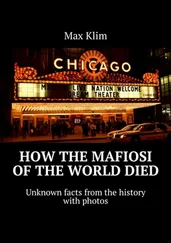As he established himself in L.A. Haden started working with Paul Bley, whose band played at the Hillcrest. On a night off, at the Haig, he heard an alto player sitting in on a Gerry Mulligan gig, playing a solo so crazy he was promptly ordered off the stage. Haden was transfixed (‘the whole room lit up for me’), but the unwanted guest left too quickly for Haden to follow him out into the night. When he started asking around about this mysterious player, the drummer from Bley’s band, Lennie McBrowne, asked if the guy was playing a plastic saxophone. He was! So McBrowne brought the guy along to the Hillcrest and introduced him to Haden. His name was Ornette Coleman. After the gig, Haden went back to Ornette’s place, which was so littered with music that it was hard to open the door. They played all day and all the next night. A little later he met fellow aficionados Cherry and Higgins (who had been mentored by Coleman’s long-time collaborator Ed Blackwell). They began rehearsing Ornette’s music together, playing at the Hillcrest (with Bley on piano) in October 1958.
So this white boy — born in Shenandoah, Iowa, raised in the Ozarks of Missouri — with country music in the marrow of his bones is suddenly at the frontier of the avant-garde. The following year the quartet will head east, to the Five Spot in New York, to unleash the shape of jazz to come. Haden will look up and see Charles Mingus, Percy Heath, Paul Chambers — the great bass players of the age — and decide that it’s best if he plays with his eyes shut, so that it’s just himself and the bass, himself and the music.
Tiny Naylor’s, at the junction of Sunset and La Brea, was demolished in 1984. It’s now an El Pollo Loco. Where was Ornette’s apartment, the place he and Haden went to after their first meeting at the Hillcrest? There’s no mention of the address, either in Rambling Boy or in any of the books I’ve read about Ornette. (It is possible, on the other hand, to locate the place on Wilshire where Bullock’s department store used to be, where Ornette supported himself by working as an elevator operator.) On the front cover of In Angel City there’s a photo of the Hillcrest with a small sign advertising the Ornette Coleman Quartet. Not to be confused with the country club of the same name, the Hillcrest was on Washington Boulevard, a block east of La Brea. It’s not just that it’s no longer there. I was unable, from the information I had, to work out exactly where it used to be.
The Ballad of Jimmy Garrison
While Adorno was living in Los Angeles, did reports or rumours reach him about something that was happening over in the south-east of town, in Watts? That another émigré, an Italian, was building a demented trio of towers in his back yard?
I saw the towers — or a picture of them at any rate— before I’d heard about them, before I knew what they were. They’re in the background of the photo on Don Cherry’s album Brown Rice: skeletal spires silhouetted against the twilight, with Cherry in the foreground, cradling his trumpet, wearing robes that seem not only pan-African but pan-astral. Taken together, the purple-blue sky, Cherry’s outfit and these skyrocket towers create the impression that this may have been the site from which Sun Ra would have chosen to blast off and return to Saturn. Cherry grew up near the towers after his family moved to Watts from Oklahoma. I’m guessing that he must have known Charles Mingus, who was born in 1922—making him fourteen years Cherry’s senior— before he started playing with Ornette, before Mingus came to see the Coleman Quartet at the Five Spot in New York in 1959 (keeping, I’m guessing again, a special eye on Charlie Haden, who also plays bass on Brown Rice ). In his autobiography, Beneath the Underdog, Mingus remembers ‘something strange and mysterious’ being built near his home (‘what looked like three masts, all different heights, shaped like upside-down ice cream cones’) and how local rowdies would throw rocks at the crazy Italian guy who was doing this work.
We drove over there, to Watts, on a cloudy Saturday. Instead of Brown Rice we were listening to ‘Upper Egypt & Lower Egypt,’ the long, slow-to-get-going, two-part song by Pharoah Sanders on Tauhid . Ten minutes of random percussion and bass and plonking around that never seems like getting anywhere. Then the bass initiates a surge that is picked up by drums, electric piano and guitar in preparation for the entry of the sax — which still doesn’t happen, which seems imminent long before Pharoah, after further waiting, eventually comes blazing through like a comet in daylight. You’ve been expecting it for ages and it still feels like it comes out of nowhere. Pharoah started as an R ’n’ B player, and you can feel him plugging back into that before he’s crying and screaming, crying like a baby who knows that’s the only way he’ll ever get fed, that the cry can feast on itself.
‘There they are!’ I called out as soon as I saw the towers.
‘Well, where else would they be?’ said Jessica.
‘What I meant was, we have arrived at the place where they are.’
We parked. We were always parking, either parking or driving around looking for a parking place or easing out of a parking space or getting our parking ticket validated, never confident about the procedure, worried that we had parked in some place that looked like a parking space but wasn’t. Often the mere fact that a parking space was available suggested that it was not a parking space: if it had been a parking space it would already have been taken and would not have existed.
The Watts Towers looked, at first, a little smaller than anticipated. Not in height — the three main ones were tall, elegant, vying with each other for altitude — but in the way they were clustered together, hemmed in. More space between them would have made them airier, less solid-looking. The cramping, I saw as soon as we got out of the car, was the product of the six-foot metal fence around the perimeter of the site. Instead of starting at ground level the towers began, visually, six feet from the ground, over the top of the fence. Aesthetically the trick was to keep people out while allowing the sky in; like this the balance — in a place that was partly a celebration of balance — had tipped away from aesthetics towards security. Maybe the weather had played a part; unusually, the sky itself was hemmed in by a band of cloud.
We walked around the perimeter, seeing for the first time the intricacy of the structures, the abundance of decoration and ornamentation. From the Brown Rice photo the towers seemed made austerely of metal, but each spar, strand and tendril was covered with concrete, adorned with glinting coloured crockery, green and blue glass, bits of tiles.
The only way to get in among the towers is on a guided tour. We bought tickets at the Visitors’ Center — appropriately homey rather than fully corporate. The tickets, pinky purple, were like the ones you used to get at cinemas; the guy handing them over was wearing a large black T-shirt that was just about big enough for him. We showed him the Cherry album cover on Jessica’s phone.
‘Oh man, that’s deep,’ he said. He liked the picture so much he showed it to a colleague, handed the phone back and said again how deep it was. I’d never heard the word ‘deep’ used in this way before. Was it an old expression that had fallen out of use or a new one that I’d not come across, something specifically African American that had not yet crossed over into general usage? I liked it but couldn’t imagine myself ever saying it without sounding sceptical or ironic. Adorno was deep, obviously, but if I said he was deep it would sound like a shallow response or, worse, like I was parodying a shallow response to show the depth of my own understanding.
Читать дальше












